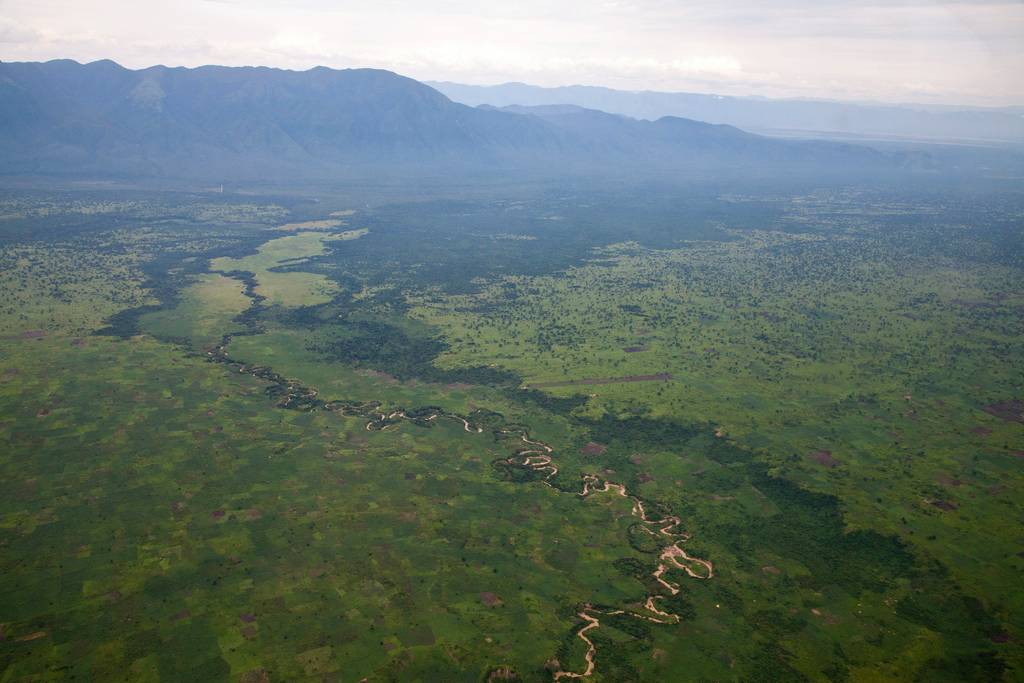Securing Community Land Tenure in Eastern Congo as a Means to Save the Critically Endangered Grauer’s Gorilla
- Nature Conservation
- Land Conservation
- Wildlife
- Mammals
- Forests
- Daughters for Earth
- Women
- Equatorial Afrotropics
- Afrotropics Realm
| Bioregion | Victoria Basin & Albertine Rift Forests (AT12) |
| Category | Nature Conservation Our project categories represent one of three core solutions pathways to solving climate change. Energy Transition focuses on renewable energy access and energy efficiency. Nature Conservation includes wildlife habitat protection and ecosystem restoration, as well as Indigenous land rights. Regenerative Agriculture supports farmers, ranchers, and community agriculture. |
| Realm | Afrotropics The Project Marketplace is organized by the major terrestrial realms divided into 14 biogeographical regions – N. America, Subarctic America, C. America, S. America, Afrotropics, Indomalaya, Australasia, Oceania, Antarctica, and the Palearctic realm, which coincides with Eurasia and is divided into Subarctic, Western, Central, Eastern, and Southern regions. |
| Partner | Dian Fossey Gorilla Fund |
One Earth’s Project Marketplace funds on-the-ground climate solutions that are key to solving the climate crisis through three pillars of collective action — renewable energy, nature conservation, and regenerative agriculture.
The entire range of the eastern lowland gorilla, or Grauer’s gorilla, has been severely affected by uncontrolled illegal human activities resulting from 25 years of conflict and the region’s extreme poverty. Since the 1990s, Grauer’s gorillas have lost 52% of their suitable habitat, mainly in the eastern part of their home range. Mining, bushmeat trading, and gorilla trafficking have also dramatically increased during this time, leading the overall Grauer’s gorilla population to have decreased from an estimated 16,900 individuals to as few as 4,000 individuals today.
.jpeg)
Image credit: Courtesy of the Dian Fossey Gorilla Fund
Eastern Congo has the second-highest rate of extreme poverty in the world. Years of civil war and rebel activity and the corresponding lack of access to basic food and health care have led to the death of more than 5 million people. With laws recently passed by the government, people can now establish ownership over their traditional land. Since 2012, the Dian Fossey Gorilla Fund has supported 12 families in forming a community conservation area, and they just received official land titles in April of 2021 - a fantastic achievement! The Fund has signed a 25-year agreement with the community to help the families develop a sustainable management plan for the area and protect the critically endangered Grauer’s gorillas.

Image credit: Courtesy of the Dian Fossey Gorilla Fund
This is an ongoing project for which funds must be raised each year. Its primary beneficiaries are local communities who have entered into the 25-year agreement with the Dian Fossey Fund to manage their land for conservation.
This includes providing jobs, food security, and livelihood programs, supporting their children’s education, building infrastructure such as health clinics, and ensuring the health of their overall forest through developing long-term management plans.
The global community also benefits through the protection of one of the world’s best natural defenses against climate change. The results from 10 years’ partnership are impressive: 1,583 sq km of land have been protected; 500 great apes and a host of other biodiversity is protected; 200 children have been supported to attend school; seven local associations are supported in livelihood and food security work; 70 permanent and 150 casual jobs have been provided; One hundred eighty million tons of carbon have been sequestered.
.jpeg)
Image credit: Courtesy of the Dian Fossey Gorilla Fund
The Fund’s four pillars are the basic infrastructure of the program: protecting gorillas, conducting science, training the next generation of conservationists, and helping meet the basic needs of local communities. They are working with the community to register on the carbon market to provide a source of sustainable funding for these activities so that they are not wholly dependent on donor support.
.jpeg?auto=compress%2Cformat&w=1400)
